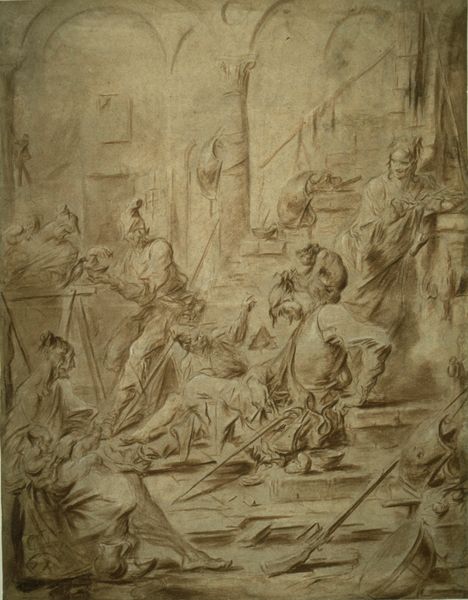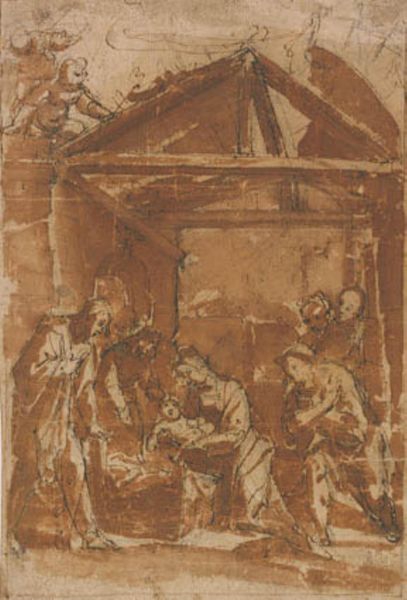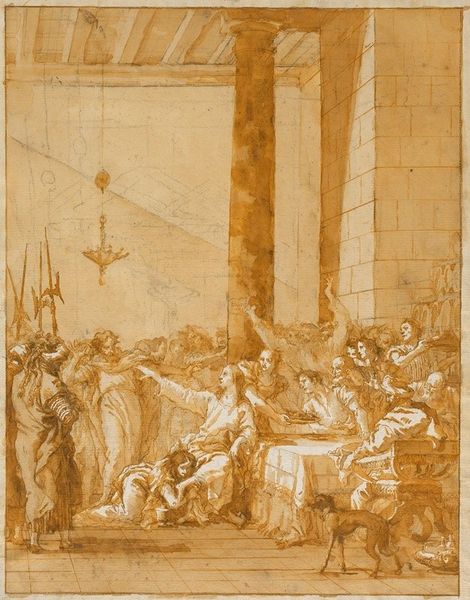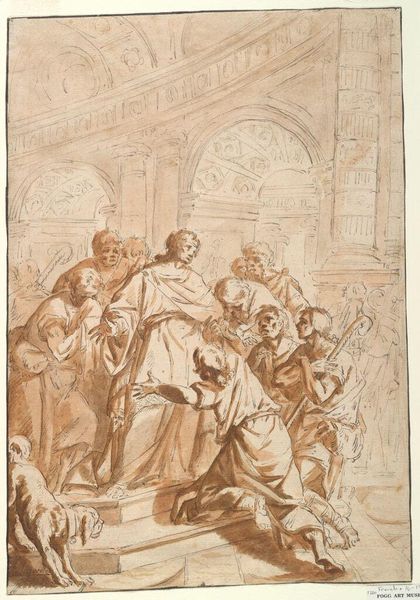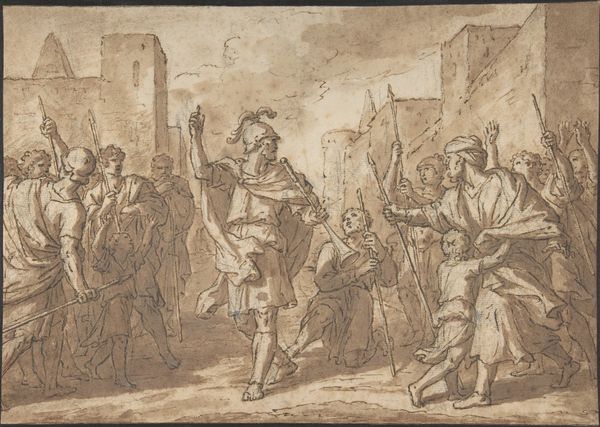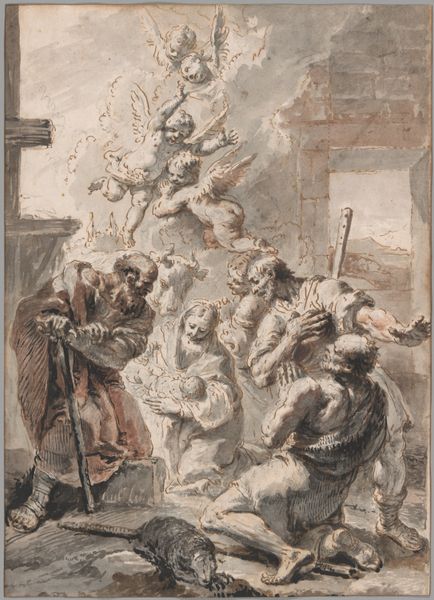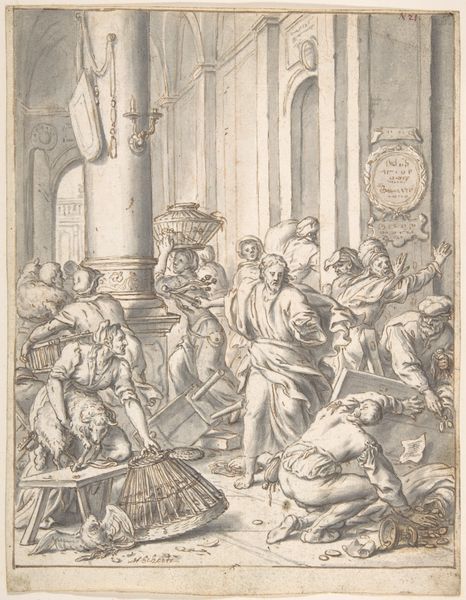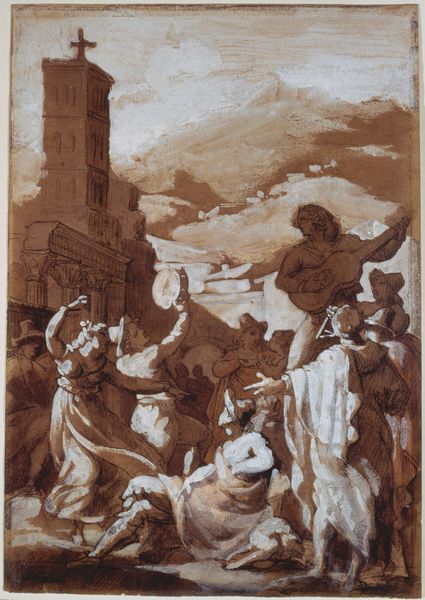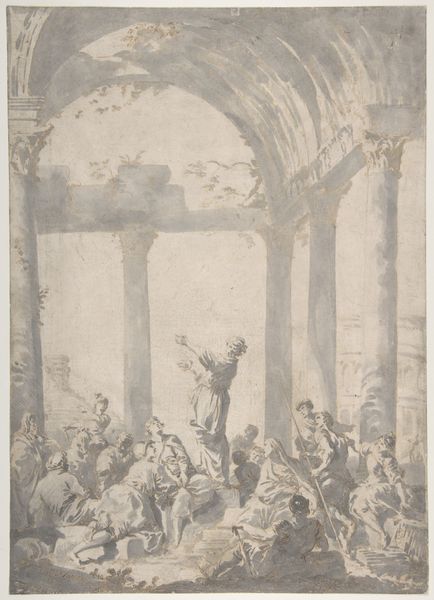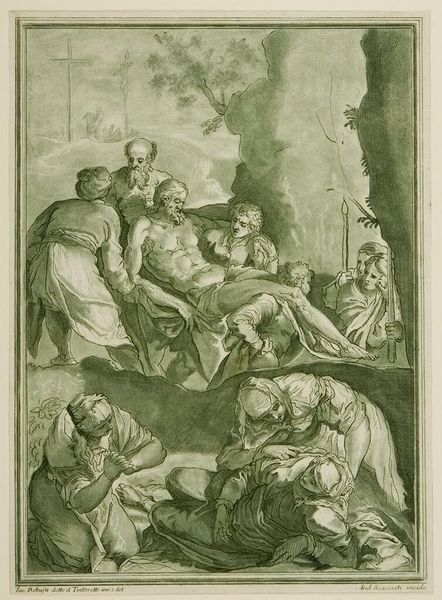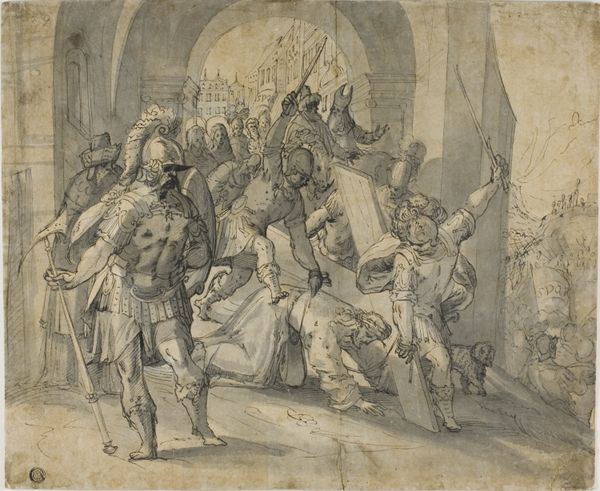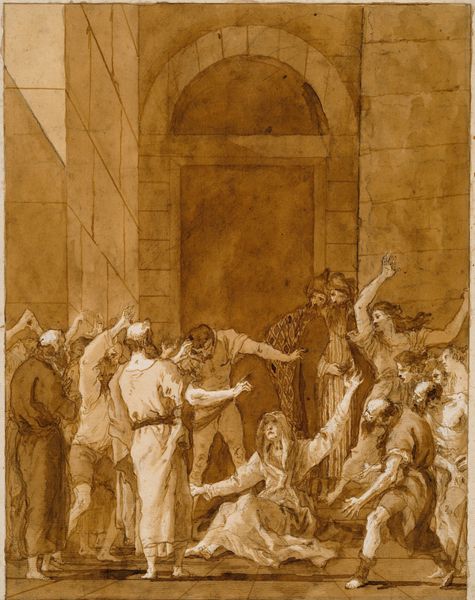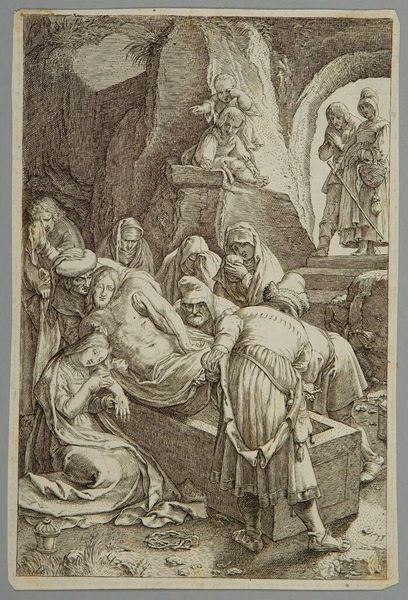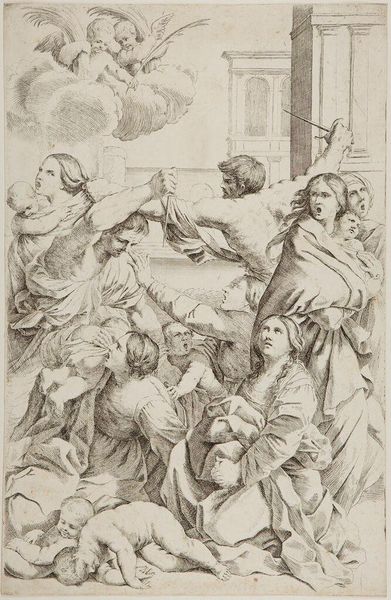
drawing, pen, charcoal
#
drawing
#
baroque
#
charcoal drawing
#
figuration
#
charcoal art
#
oil painting
#
pen
#
charcoal
#
history-painting
#
academic-art
#
charcoal
Copyright: Public Domain: Artvee
Giovanni Battista Tiepolo made this wash drawing titled 'Beheading of Two Male Saints' in 18th-century Italy. Tiepolo, celebrated for his large-scale frescoes, often explored religious and historical themes. Here, he confronts us with a brutal scene, using dramatic light and shadow. The saint's martyrdom resonates with the Counter-Reformation's emphasis on sacrifice, especially during the height of the Venetian Republic's power. It invites us to reflect on the dynamics of faith, power, and spectacle within Italian society. The architecture hints at both the grandeur and the cruelty of institutions. Was this piece commissioned by a religious institution? Or was Tiepolo commenting on the social structures of his time? To truly understand this work, we need to dig into archives. We have to examine patronage records and theological debates of the era. Art history isn't just about aesthetics. It's about understanding the complex interplay between art, society, and institutions.
Comments
No comments
Be the first to comment and join the conversation on the ultimate creative platform.
